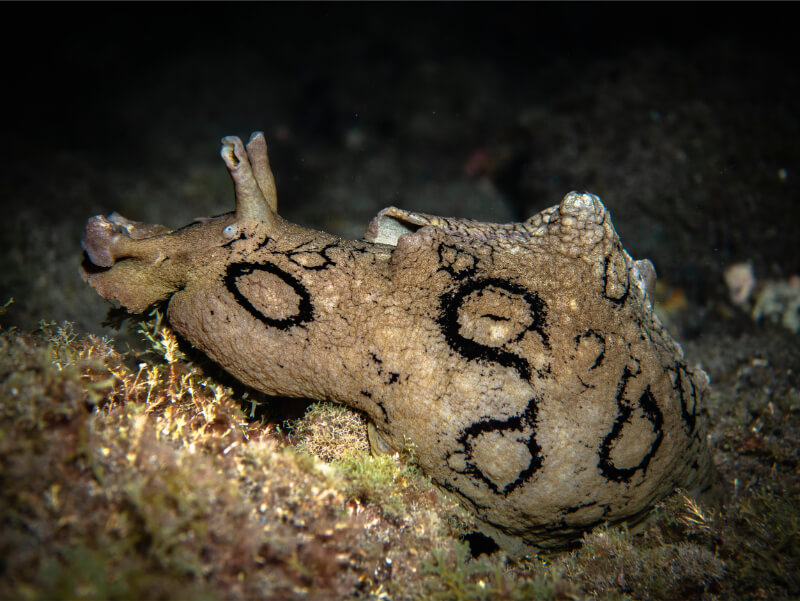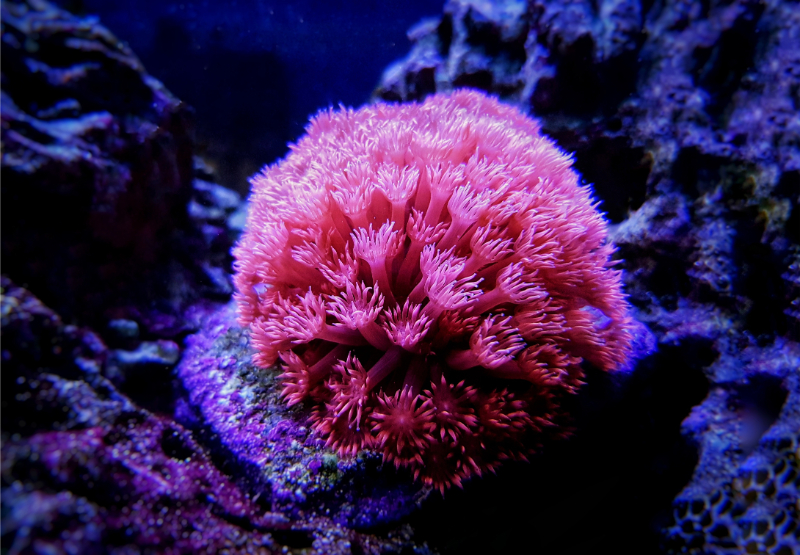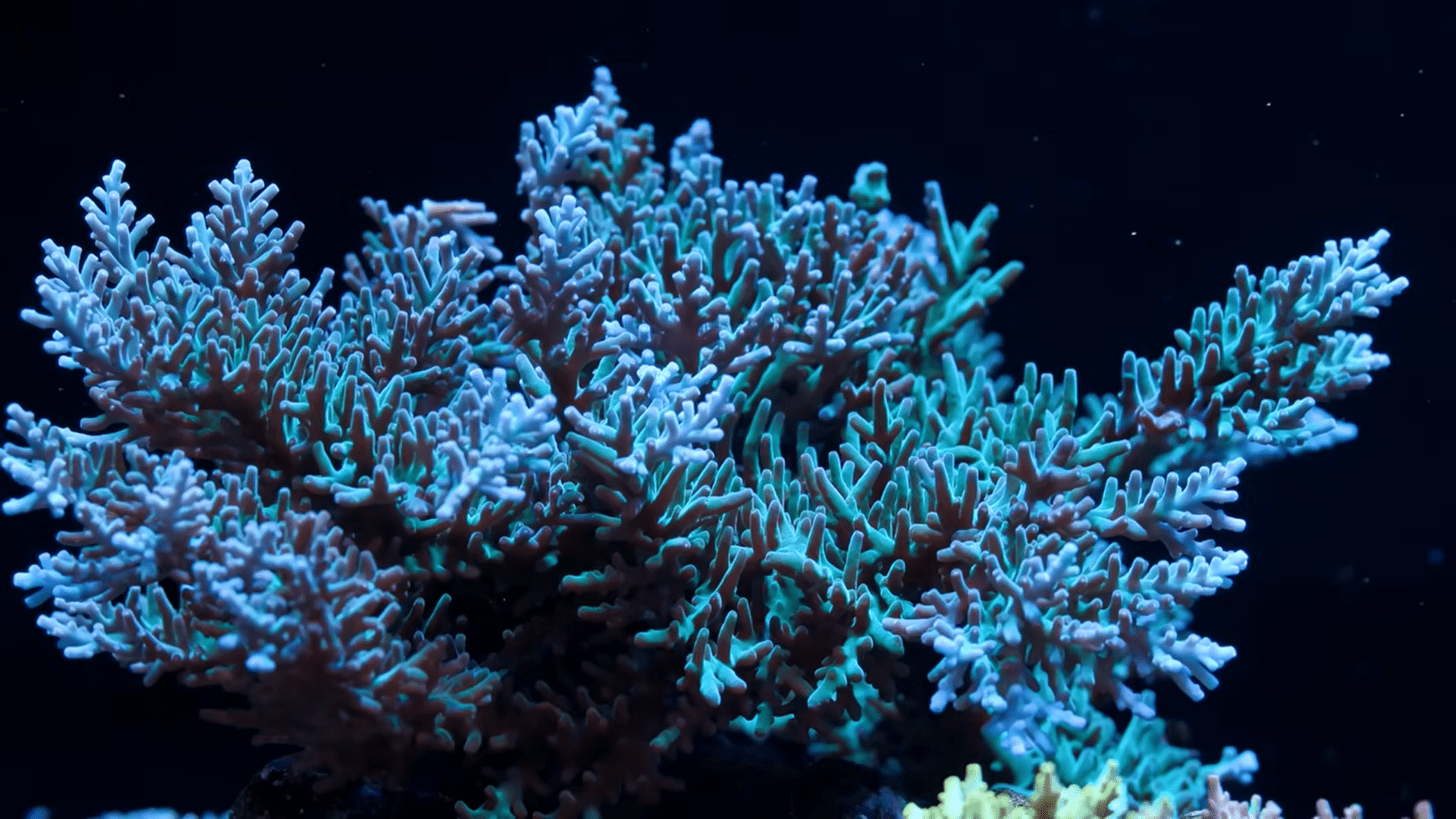If you’ve ever wondered what it takes to care for the lovably eccentric Sea Hare Slugs, you’re in for a treat (or maybe a sea vegetable, their favorite snack).
Imagine a pet that looks like a mix between a rejected Muppet character and an avant-garde fashionista from the deep blue. Yes, that’s the sea hare slug for you! With their floppy bunny ear-like appendages, flamboyant colors, and a tendency to squirt ink like rebellious undersea artists, they’re the ocean’s own comedians.
In this guide, we’ll dive deep into the world of sea hare slug care, from setting up the perfect underwater bachelor pad to deciphering their cryptic slug language (yes, they have one).
Get ready for lots of learning, and a whole lot of slimy fun!
Quick Facts 
| Scientific Name: | Aplysia |
| Other Names: | California black sea hare, wedge sea hare, Aplysia Fasciata, Dolabella Auricularia, Aplysia Californica |
| Reef Safe: | Yes |
| Lifespan: | 1 yr |
| Size: | 3-14in |
| Care: | Medium to Difficult due to strict water requirements and release of toxic purple ink. |
| Diet: | Herbivorous, algae and seaweeds. |
| Water Parameters: | 72-78 F, 1.023-1.025 SG, 8.1-8.4 pH, 8-12 dKH |
| Tank Size: | 75 gallons |
| Behavior: | Passive and most active at night. |
| Breeding Difficulty: | Difficult because need more than one. |
Species Summary
Let’s dive into the world of sea hares, specifically the fascinating Aplysia species. Now, you might be imagining a bunny of the sea, but these marine invertebrates are actually mollusks, closer to marine snails than fluffy hoppers.
- Scientific Name: These chubby sea friends go by the name Aplysia vaccaria, and are a type of sea slug that belong to the order Anaspidea.
- Other Names: Some go by snazzier titles like California black sea hare or even the wedge sea hare, depending on their shape and style.
- Origins: Spreading their charm across the oceans, you can find these slugs from the beauty of California’s coasts to diverse locations worldwide. They are quite the maritime globetrotters!
- Habitat: These sea hares are all about lounging in the warm waters. They adore shallow water, often kicking back in rock pools on the low shore. Sea lettuce salad, anyone?
Don’t be fooled by their laid-back lifestyle; these sea hares are crucial to our ocean ecosystems. With a range that includes species like the Aplysia californica, their presence indicates a healthy, blooming marine environment.
- Conservation Status: Most sea hares are doing okay, but it’s your job to keep an eye out and help protect their undersea homes.
Remember, while they may not win any races, sea hares are important for the health of our oceans. So, next time you’re out by the sea, keep your eyes peeled for these gentle sea-dwellers.
Appearance
These marine creatures have a style of their own, donning a look that’s both bizarre and beautiful.
The Sea Hare Slug might not win any beauty pageants compared to its shell-wearing cousins, but what it lacks in a flashy external shell, it makes up for with a fabulous internal one that stays hidden like the best kept fashion secrets. You’ll usually catch these slugs flaunting shades of brown and green, perfect for blending in with the latest in seaweed trends.
Their mantle, which is like a cloak of invisibility (eat your heart out, Harry Potter), and parapodia, the fancy flaps on their sides, might convince you they’re just about ready to fly underwater.
And those tentacles? Those are not just some funky headgear, my friend – they’re sensory organs, looking like the long ears of a hare and serving as their trademark feature. They actually have a name, these “horns” are called rhinophores and help them detect chemical signals in the water.
This is how they find food, locate their friends, and know when to hide from predators. Additionally, near their mouths they also have oral tentacles that are part of the food searching equipment.
Author Note: The Sea Hare’s ensemble is completed with a tiny siphon, functioning like a snorkel for a stylish gulp of fresh seawater and to deflect water away from the mantle cavity.
Sporting radula instead of teeth, they munch on algae like it’s their last meal at a posh sea-restaurant, all the while navigating with a sneaky coloration strategy, often accented with chic black rings.
Average Size
A typical Sea Hare Slug has an average size between 3in and 14in although there are outliers like the California black sea hare (Aplysia vaccaria) breaking the maximum recorded size with 39in and weighing 31lbs! An average sea hare weighs between 5lbs (2.3kg) and 15lbs (7kg).
Lifespan
Sea Hare Slugs have a lifespan of 1 year although there have been some record breakers like the Wedge Sea Hare living a whopping 6 years!
Growth Spurt:
- So, you’ve got a larva? Give it about 2 months, and, voilà, it’s a full-blown adult sea hare.
- Talk about speedy development – they’re the sprinters of the snail world!
Remember, the environment they’re slurping around in makes a big difference. In a well-managed aquarium, some can hang on a bit longer with all that five-star algae room service. But in the wild, survival’s tougher with predators lurking and no daily housekeeping.
Fun Fact: Hermit crabs think they’ve won the ocean lottery if they stumble upon an empty sea hare shell – talk about an upgrade from a studio to a penthouse!
Popular Sea Hare Species and Colors
When you embark on the journey of keeping sea slugs, you might be surprised by the variety of species and the vibrant colors they boast. Sea hares, specifically, come in a palette that would make even the most seasoned artist a tad envious. Let’s hop into the ocean of colors and species, shall we?
- Aplysia Fasciata. Known as the Sooty Sea Hare, your underwater buddy might sport a charming, dark brown to black coloration, much like they’ve rolled in a soot stash.
- Dolabella Auricularia. The Wedge Sea Hare sneaks in with its olive green to brown hues, cleverly camouflaging amidst the aquatic greenery.
- Aplysia Californica. Also referred to as the California Sea Hare, they’re the ocean’s hippies, exhibiting a blend of mottled brown, green, or reddish-purple shades. Groovy, right?
Color is not just for show with these slugs; it’s all about their diets. Dive into the world of sea hares, and you’ll learn that they can change their color based on their seaweed meals.
For instance, if they’re gobbling down green seaweeds like sea lettuce, they might don a delightful shade of green—talk about wearing what you eat!
Care
Caring for a Sea Hare Slug is like being entrusted with a tiny, squishy piece of the ocean. Don’t worry; with the right setup and a bit of marine mastery, you’ll be the talk of the tide pool!
Tank Size
First things first, your Sea Hare pal needs room to roam. A spacious tank is non-negotiable. You need at least a 75-gallon aquarium to make your sea hare slug feel at home (check our 75 gallon tank guide). Imagine trying to do a backstroke in a bathtub; your sea-slug friend needs space just like you would!
Water Parameters
Now let’s talk water, which is, after all, the sea hare’s version of the air we breathe. The quality and stability of water are pivotal:
- Salinity: Keep it steady with a salinity ranging from 1.023 to 1.025 ppt. Riding the salinity seesaw? Prepare for a very dizzy and displeased sea hare.
- Temperature: An ideal range is 72-78°F (22-25°C). No one likes a cold shower or a hot tub that’s just too hot, right?
- pH: Aim for a range of 8.1-8.4. It’s not rocket science, it’s water science, folks!
- dKH (Carbonate Hardness): Keep it between 8-12 to ensure your slug’s shell house feels just right.
It’s not just about survival; it’s about helping your slug thrive. When you recreate a habitat similar to their shallow, tropical waters paradise, you’re not just a pet owner; you’re an eco-hero!
Are Sea Hare Slugs Reef Safe?
Yes! Sea Hare Slugs are generally regarded as reef safe. This means they typically won’t harm your coral and can coexist peacefully with other tank inhabitants.
Author Note: It’s like they’ve signed a peace treaty with your corals! However, they can have larger appetites, munching on algae which, frankly, your tank could do without.
But beware! These creatures can also release a purple ink when startled, reminiscent of a scene from a spy movie. While this inky escape tactic is a wonder to watch, it might stress out your other tank friends if overdone.
Common Possible Diseases and Prevention
Sea hares, your squishy marine buddies, have their fair share of hiccups when it isn’t all smooth sailing in their aquatic world. Knowing what ails them is key to keeping these gardeners of the sea happy and healthy.
Ink Stain Infections. Your sea hare has an inky defense mechanism which is cool but risky. If stressed, they might release toxins in the form of purple ink which can cause messy tank issues leading to bacterial growth.
To prevent this, keep their environment stress-free with plenty of hiding spots and a well-maintained tank.
- Skinny Dip Solutions: Sea hares might experience skin irritations due to poor water conditions. You’d want to regularly check your water parameters – pH, salinity, and temperature should be just right. Think ‘spa day’, but for your aquarium.
- Parasite Party Crashers: Pesky parasites can latch onto your sea hares. Regular tank maintenance and quarantine of new tank mates will help avoid these uninvited guests.
- Appetite for Nutrition:
- Lack of Greens: A balanced diet prevents nutritional deficiencies. Make sure they’re munching on enough algae.
- Vitamin Boost: Consider food enriched with vitamins to keep their digestive systems cruising along.
- Shell Shock: While not common, shell issues can occur. Ensure a diet rich in calcium for that internal shell support.
| Directory of Doom | How to Dodge the Bullet |
| Bacterial Growth | Consistent tank cleaning |
| Skin Problems | Stable, quality water conditions |
| Parasites | Quarantine new arrivals |
| Nutritional Deficiencies | Algae-based diet with vitamins |
Food and Diet
Wave hello to the sea hare’s menu! Sea hares are herbivorous creatures, which means they love to eat greens all day long. If you were a sea hare, imagine having a buffet of various algae and seaweeds at your disposal like the ones they find on rocky shores.
They adore dining on red algae just as much as you might like snacking on a bowl of your favorite munchies.
What’s on the Sea Hare’s Plate?
- Red algae
- Brown algae
- Green algae
- Dried kelp
- Eelgrass
- Sometimes, they nibble on other plants too if they’re feeling adventurous!
Now, these aren’t greedy eaters. They take their sweet time, lazily grazing upon the ocean’s garden. Their feeding habits are pretty cool, as they use a specialized structure called a radula—think of it as their personal lawnmower for algae!
Sea Hare Grocery Shopping
- Locate their favorite algae or seaweed.
- Glide over using their ‘foot’—yes, they shop on foot!
- Use the radula to scrape up dinner.
- Store some leftovers in their crop for a midnight snack.
Remember the crop? It’s like their built-in pantry. This helps them store food, ensuring they’ve got reserves for leaner times. Smart, right?

Behavior and Temperament
You might think of the Sea Hare as the chilled-out cousin of the bustling marine world. These creatures are mostly known for their laid-back lifestyle.
They tend to move at a leisurely pace across the seafloor, gently grazing on algae as they go. It’s a bit like watching a slow-motion buffet.
- Social Interaction: Mostly solitary, your sea hare friend isn’t throwing any underwater parties. They prefer the quiet life, occasionally coming together in groups when it’s time to breed.
- Activity Level: Slow and steady wins the race, and that’s the sea hare’s motto. Their movement might be languid, but it’s also quite graceful in its own sluggy way.
- Defense Mechanisms: If disturbed, they have a truly novel way to deter predators and nosy neighbors; they can release a cloud of ink to make their escape! But don’t worry, it’s more of a magic trick than a menace.
They may not win any sprints in the ocean, but they’re definitely winning in the category for most relaxed sea creature.
Tank Mates and Predators
When considering roommates for your Sea Hare, remember they’re the peaceful, laid-back kind—think of them as the sea’s chillaxed hippies. So, peaceful tank mates are a must. Here’s a quick list for you:
- Snails and hermit crabs: They’re like the slow-moving, non-bothersome next-door neighbors.
- Small shrimp: Just like quirky sidekicks in sea hare sitcoms, they keep unnecessary drama at bay.
- Certain fish: Think small, non-aggressive fish that won’t mistake your sea hare for a snack. Some good options might be Clownfish, dwarf angelfish (Bicolor Angel is one of them), Rabbitfish, Tangs and wrasses so you can try the Christmas Wrasse.
Avoid pairing your Sea Hare with predators or aggressive tank mates. They don’t appreciate the drama. Predators include:
- Lobsters and crabs: They’re like the bullies of the tank, always looking for trouble so avoid the Arrow Crab.
- Starfish: Not the Patrick Star kind, the real ones that lurk with a hungry eye like the Brittle Starfish.
- Large, carnivorous fish: These would-be leading actors often want the whole tank to themselves so we would stay away from the Queen Triggerfish.
The ink they release when feeling threatened can sometimes affect the water quality. So, keep your sea hare’s living arrangements calm (Anemones are also not good companions), cool, and carnivore-free, and they’ll keep the peace by just being their adorable, laid-back selves!
Breeding and Reproduction
Did you know that sea hares are quite the romantic hermaphrodites of the ocean? Being simultaneous hermaphrodites, they’re equipped with both male and female reproductive organs. This means a single sea hare can play the role of both mommy and daddy when it comes to making little sea hare babies.
Author Note: In the breeding season, when the water is just warm enough and the algae buffet is abundant, sea hares get into the mood for love. And how do they do it? With a nifty little behavior that might remind you of a conga line.
They form mating chains, where multiple individuals line up to form a chain of love, with each hare acting as a male to the one in front and a female to the one behind. Talk about efficiency!
- Eggs: After the dance, sea hares lay strings of millions of eggs that resemble a tangled mess of spaghetti. These eggs contain a touch of purple dye, a gift from their ancestors which is theorized to help deter predators, much like a Greek tragedy deterring you from messing with fate. Larvae will then hatch 10-12 days later.
- Reproduction Roles: Since they’re hermaphrodites, each sea hare can lay eggs and fertilize them, but it’s a little more polite to swap roles with your partner – it’s only fair.
Additionally, these mollusks are not just about the romantic endeavors; they are kind of brainy too. Research performed on sea hares have contributed significantly to our understanding of learning and memory. You could say they are the smarty-pants of the sea slug world.
It’s a wrap!
And there you have it, fellow sea hare aficionados! We’ve navigated the quirky waters of sea hare slug care together, and what a wild and whimsical journey it’s been.
As you embark on your own sea hare adventure, remember to keep the fun alive! These eccentric, ink-squirting companions bring joy, laughter, and a touch of the surreal to your underwater world. Whether they’re doing their slow-motion ballet or staging an underwater ink-spewing spectacle, sea hares are sure to keep you entertained.
In your quest to be the ultimate sea hare whisperer, don’t forget to create the perfect bachelor pad, maintain water quality, and give them all the sea veggies they desire.
So, embrace the “slug life,” and treasure the delightful companionship of your sea hare slugs. They’re not just pets; they’re your undersea buddies, your fellow jesters of the deep blue.
Thank you for joining us on this sea hare caring journey and if you have any questions don’t hesitate to reach out to us. By the way, don’t forget to tag us on Facebook when sharing cool photos of these slow moving friends. Best of luck!
FAQ
Are sea hares venomous?
When stressed they release a purple ink which is a toxin, but it is not poisonous to humans. Just make sure to wash your hands after handling a sea hare and don’t let your dog lick them.
Why is Aplysia called sea hare?
The tentacles or horn-like structures on their head look very similar to hare’s ears, which is where the name came from. What do you think about also calling them “sea jackrabbits”?
Can you eat sea hares?
Nope! Although not toxic to the touch they are definitely bad to the stomach. Their eggs however, are eaten raw and cooked as a delicacy. They are also good algae cleaners!



